In January, the US Air Force selected 11 companies to proceed with the conceptual development of a high-speed vertical takeoff and landing (HSVTOL) aircraft. Initiated in the spring of 2021 as the High-Speed VTOL Challenge, the effort is a collaboration between AFWERX, the Air Force’s innovation hub, and US Special Operations Command (SOCOM). The HSVTOL program seeks to develop an aircraft that could eventually replace the Air Force’s CV-22 Osprey, one that can fly on the order of 400 kt (740 km/h) and conduct a range of missions such as personnel infiltration, tactical mobility and aeromedical evacuation. The initial call for ideas resulted in 218 proposals, which AFWERX narrowed to a preliminary 35 solutions in August 2021 (see “Air Force Challenges Industry for High-Speed VTOL,” Vertiflite, Sept/Oct 2021). Of these, AFWERX has now selected 11 for investment in Phase 1 of the program.
Competitors in the program have praised AFWERX’s approach to soliciting a broad base of ideas and encouraging collaboration. “By connecting a well-educated and focused team inside of AFWERX with the private sector, they’re trying to meet the goal of moving fast,” Jason O’Neill, COO of Astro Aerospace, said in a conversation with Vertiflite. Jeff Nissen, senior manager for advanced technology and HSVTOL program manager at Bell, agreed, telling Vertiflite that the AFWERX Challenge was “a really good way of driving competition through this process.” The proposals submitted by the 11 companies — American Aerospace Engineering, Astro Aerospace, Bell, Continuum Dynamics, Jaunt, Jetoptera, Piasecki, Transcend Air, Valkyrie, VerdeGo and Whisper — include designs for HSVTOL aircraft and propulsion systems. The companies have until June 30 to complete the concept development effort in Phase 1, before a subset will progress to Phase 2 — risk reduction and design. Eventually, AFWERX will select a handful for full-scale prototyping.
American Aerospace Engineering
American Aerospace Engineering (AAE) will work on applying its Eversor aircraft for the HSVTOL program. Though the specifics of its contribution to the HSVTOL program are not immediately available, the White Salmon, Washington-based AAE has described the Eversor as a family of high-speed tandem tiltwing VTOL aircraft with a maximum takeoff weight ranging from 55 lb (25 kg) to 2,500 lb (1,133 kg). The modular Eversor is designed to be pilot optional and could accommodate alternative propulsion systems such as hybrid-electric or battery-electric. AAE has previously received an Air Force Small Business Innovation Research (SBIR) contract to build a one-quarter scale version of the Eversor and conduct a flight demonstration.
Astro Aerospace
Astro Aerospace will work on adapting its Horizon Aircraft Cavorite X5 for the HSVTOL program. Astro, which acquired Horizon Aircraft in June 2021, has promoted the Cavorite as an aircraft designed for “speed, stealth, and operational versatility.” According to the VFS World eVTOL Aircraft Directory, the hybrid-electric Cavorite X5 features 16 fans embedded in the wing and canard for VTOL flight and one pusher propeller for forward flight. In addition to a pilot, the X5 can carry four passengers. The Cavorite X5 is expected to have a range of 310 miles (500 km) and cruise at 215 mph (350 km/h), although the company’s submission for the HSVTOL program may not match the exact specifications of the X5. In a recent interview with Vertiflite, Astro President Brandon Robinson said they wanted to design a machine that met specific mission characteristics and that felt safe. Over the next few months, Astro will work on developing a 50%-scale flying prototype.
Bell
Bell has submitted a concept for a family of HSVTOL aircraft for the AFWERX program. First revealed in August 2021, Bell has described its proposal as a “family of scalable aircraft concepts” ranging from 4,000 lb (1,814 kg) to 100,000 lb (45,359 kg) in gross weight. In all, Bell is studying “30 or 40 concepts” within this family of HSVTOL aircraft, said Nissen. On the low end, the HSVTOL aircraft would be uncrewed and applied to missions such as loyal wing, rescue and logistics. Larger HSVTOL aircraft would be crewed, but still capable of conducting autonomous operations. A critical design characteristic of any Bell HSVTOL, said Nissen, is that they are survivable in contested airspace. Initial systems will be designed with split propulsion — two independent propulsion systems, one for VTOL flight and one for high-speed cruise — though the company is also looking at convertible propulsion systems like that used on the F-35B short takeoff and vertical landing (STOVL) jet.
Underpinning this system is the company’s folding rotor hardware technology and digital flight control systems that will enable the transition from turboprop to jet modes. Bell announced in February that it had demonstrated a full-scale prototype of its fold-away rotor technology, one that it developed based on a digital design. In a series of tests in December, Bell evaluated the hardware and software required to perform a conversion from turboprop to jet mode. The tests, said Nissen in a statement, brought the company closer to its plans to conduct an integrated demonstration of the folding rotor technology in 2022.
Continuum Dynamics
Continuum Dynamics, Inc., (CDI) will apply its new design and actuation technology to developing a Variable Diameter Tiltrotor (VDTR) for the HSVTOL program. The resulting aircraft will be scalable to a wide range of Air Force and SOCOM missions, said CDI in a Feb. 16 press release, and will meet the hover lift and speed requirements of the HSVTOL challenge. Unlike a conventional tiltrotor aircraft, a VDTR can maintain full rotor speed during cruise flight by retracting or extending the rotor blades. For Phase 1 of the HSVTOL program, CDI has teamed with AVX Aircraft, an innovator in VTOL technology and a frequent partner of CDI on VTOL projects. Initially, AVX will work on the design and analysis of hub, rotor and associated controls, though the collaboration is expected to expand in later phases of the program.
Jaunt
Jaunt Air Mobility will develop two conceptual designs for the HSVTOL program. The aircraft will incorporate Jaunt’s patented slowed rotor compound (SRC) technology, which slows the helicopter’s main rotor speed to allow for higher forward speeds. The result, said Jaunt, is a lift-to-drag ratio five times better than that of a helicopter. The first proposed design is based on the Multi-mission Air Vehicle 55 (MAV55), a conceptual 11,000-lb (5,000-kg) hybrid-electric aircraft with a 12-passenger capacity. Using a powertrain developed by VerdeGo Aero and featuring GE Aviation’s Catalyst engine, the MAV55 could reach speeds of 270 kt (500 km/h) and a range of 1,610 miles (2,591 km). At the same time, the company is developing a proposal for a second aircraft with more capability and a target of 2030, said Jaunt COO Jesse A. Crispino in an email to Vertiflite. The HSVTOL program is the latest collaboration between Jaunt and the Air Force; the Dallas-based company has already completed three Small Business Technology Transfer (STTR) contracts for AFWERX (see “Stamping Out Air Taxis,” Vertiflite, May/June 2021).
Jetoptera
Jetoptera will work on an HSVTOL aircraft system with adaptive fluid propulsion for the AFWERX program. The Edmonds, Washington-based company said in a Feb. 7 press release that it has partnered with Northrop Grumman and Pratt & Whitney for Phase 1 of the program. The company advertises its patented adaptive Fluid Propulsive System (FPS) — which uses P&W turboshaft engines to drive air compressors required by the thrusters — as offering significant weight and fuel savings compared to conventional turbofan or turboprop engines. Northrop Grumman will work with Jetoptera to design an airframe for an HSVTOL demonstrator that will integrate the FPS propulsors. Jetoptera’s selection for the HSVTOL program builds on two Air Force STTR contracts awarded in March 2021 for work on fluid propulsion systems.
“The neat thing about our concept is that for high-speed cruise, we are relying on turbofans already proven to deliver the required thrust for jet speeds in level flight,” Dr. Andrei Evulet, CEO of Jetoptera, said in an email to Vertiflite. “Choosing the right powerplant and employing the same turbofans as the source of motive air for our FPS for the vertical take-off, hover and vertical landing and the unique integration with the airframe make our solution very feasible.”
Piasecki
Piasecki Aircraft Corporation will work on developing its PA-1459 HSVTOL concept air vehicle in Phase 1 of the AFWERX program. A digital rendering of the PA-1459 shows an aircraft with two aft-mounted turbofan engines with vectoring exhausts and two tilting ducted propellers for vertical lift. All four can provide vectored thrust through 90° for vertical or super-short takeoff and landing (SSTOL) operations as well as high-speed forward flight. The low-drag fuselage of the PA-1459 is designed to achieve the high speeds demanded by the AFWERX mission and incorporates a loading ramp. The morphing ducted thruster maintains the high thrust to power ratio to effect efficient hover and low-speed maneuver while sustaining the high propulsive efficiencies in cruise. A multi-speed drive system coupled with multiple convertible gas turbines allow distribution of power to electrical generators, ducted propellers and vectored thrust from the gas turbines. Control is achieved through control laws derived from the Piasecki ARES project to provide high control power in all axes and a generous center of gravity envelope needed for a transport type aircraft. Optimization of cruise flight is achieved through Piasecki’s ADAPT flight control algorithm.
Transcend Air
Transcend Air, a Boston-based developer of high-speed VTOL aircraft, will develop the V-500 Catamount. The Catamount is a militarized version of Transcend’s civil Vy 400 HSVTOL, which the company is developing for city-to-city VIP travel. Instead of the Vy 400’s GE CT7-8 engines (a civil derivative of the T700), the V-500 will use GE T901 turboshafts, allowing it to reach a cruise speed of 435 kt (805 km/h) and combat radius of up to 720 miles (1,157 km). Transcend has partnered with Kaman Aerospace to build both the six-seat Vy 400, a subscale flight test model of which was displayed at the VFS Transformative Vertical Flight 2022 meeting in January (see “TVF2022: Vehicles and Volts,” pg. 42), and the V-500 Catamount. In a Jan. 28 press release, Transcend said the V-500 will take just 15 minutes to dash 100 nautical miles, which “could increase aircrew recovery rates by up to 70%.”
Valkyrie
Valkyrie Systems Aerospace (VSA) will develop an HSVTOL based on its Guardian HoverJet. The conceptual Guardian HoverJet has a maximum takeoff weight of 16,000 lb (7,258 kg) and useful load of 2,000 lb (907 kg). The Guardian’s two Pratt & Whitney Canada PW545C turbofans allow it to reach speeds of up to 390 kt (723 km/h) and fly for up to 15 hours using maximum fuel. The Guardian is one of two HoverJet designs currently under development at the company; the Eagle HoverJet is an uncrewed miniature version of the Guardian designed for cargo delivery. Both the Guardian and Eagle incorporate a stream-lined, stealthy design and can be operated in aircraft, hovercraft and amphibious modes. “In this next phase, we are looking to develop our solution and concept further to provide [USSOCOM] as well as the US Air Force, the research necessary towards delivering a conceptual design that fits their needs and satisfies the competition,” Steve Tafoya, VSA managing partner, said in a Dec. 9 press release.
VerdeGo Aero
VerdeGo Aero is leveraging technologies developed in its VH-3-185 hybrid diesel-electric powerplant program to develop a much more powerful multi-megawatt turbine hybrid-electric powerplant for the HSVTOL program. In a Jan. 31 press release, the Daytona Beach, Florida-based company said that it will work with airframers in the HSVTOL program to ensure that the new VerdeGo powerplant meets the needs of aircraft designed for these mission requirements. “VerdeGo has already proven our capability in sub-1-MW hybrid powerplants, and this award publicly confirms we are developing larger-scale
fully integrated turbine-hybrid solutions as well,” David Eichstedt, director of advanced concepts at VerdeGo, said in the press release.
Whisper
Whisper Aero will work on an electric quiet propulsor for the HSVTOL program, though the Tennessee-based company has been silent on the specifics of its proposal. It could resemble a previous collaboration between AFWERX and Whisper; in December 2020, AFWERX awarded the company a contract for work on a low-noise, high-power electric propulsor. According to the abstract for that SBIR project, the eQ Propulsor has an “innovative architecture that enables electric motors to achieve high specific power at low disk loading — yet with low tip speeds to achieve very low acoustic signatures.” It is not clear if Whisper’s contribution to the HSVTOL program will resemble its past work for AFWERX.




































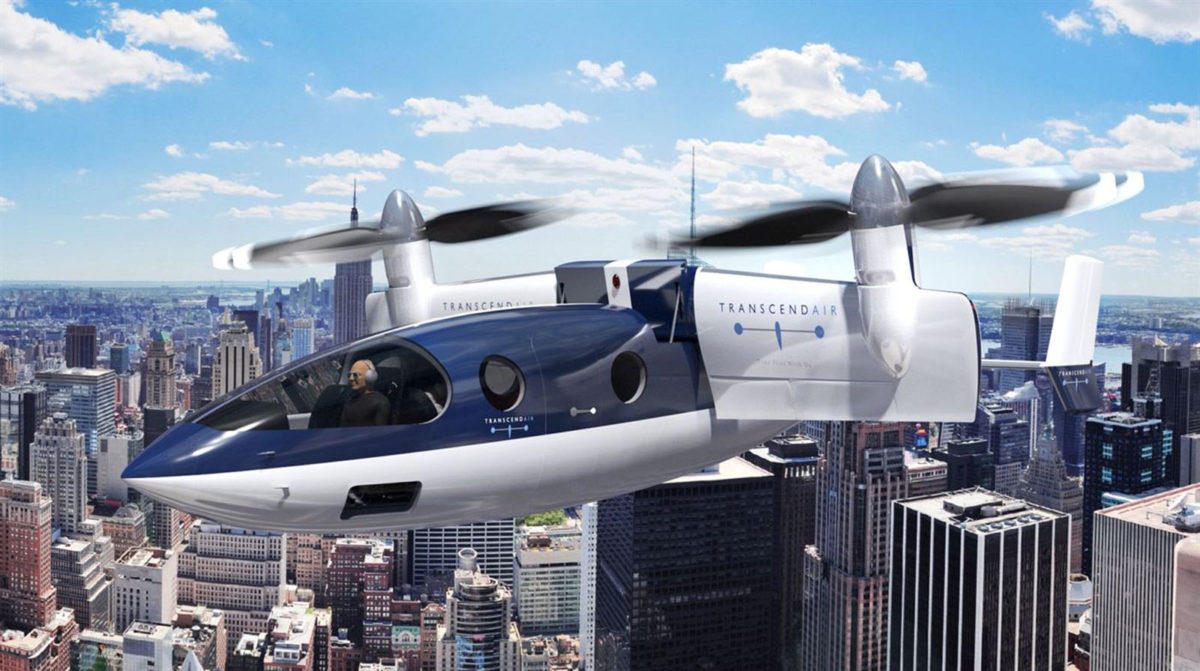







































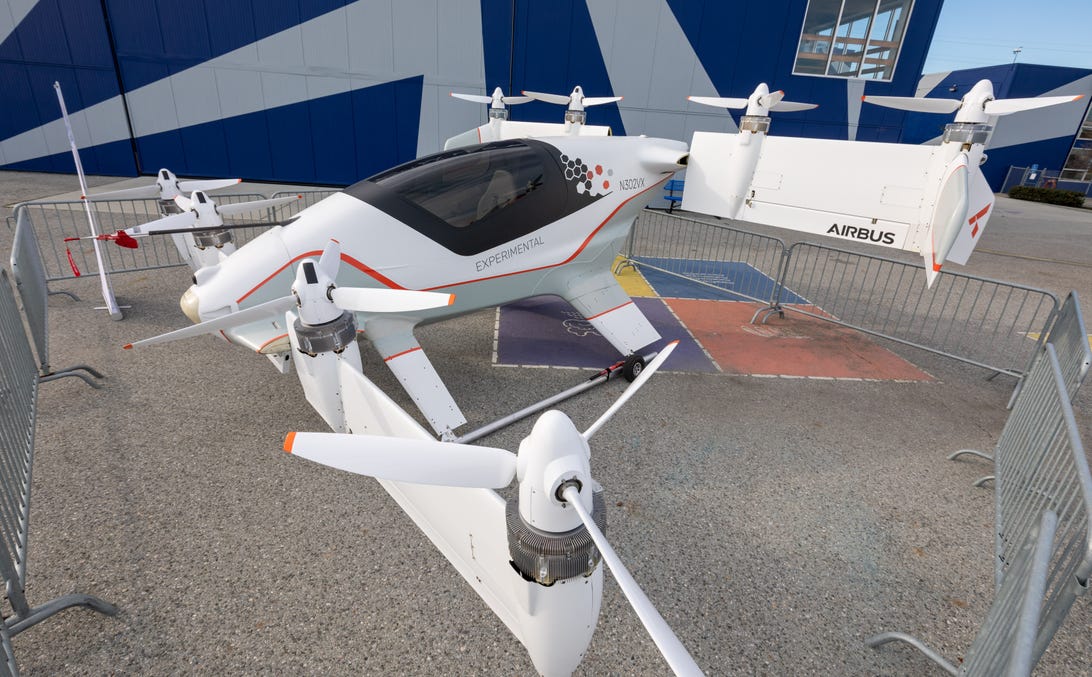
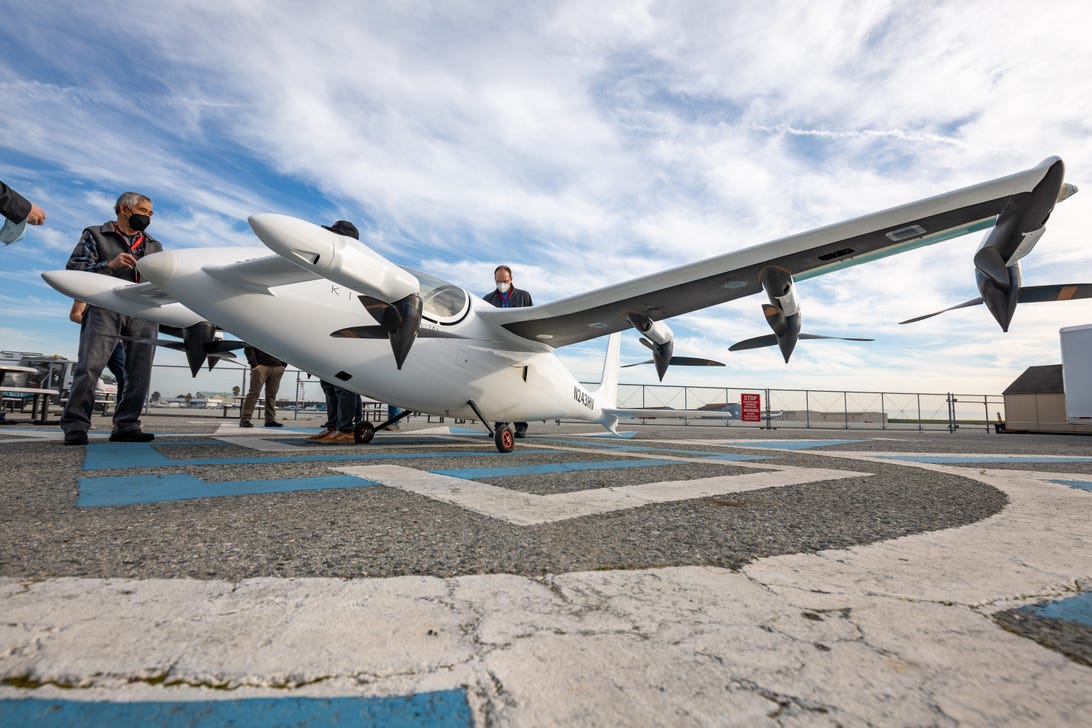
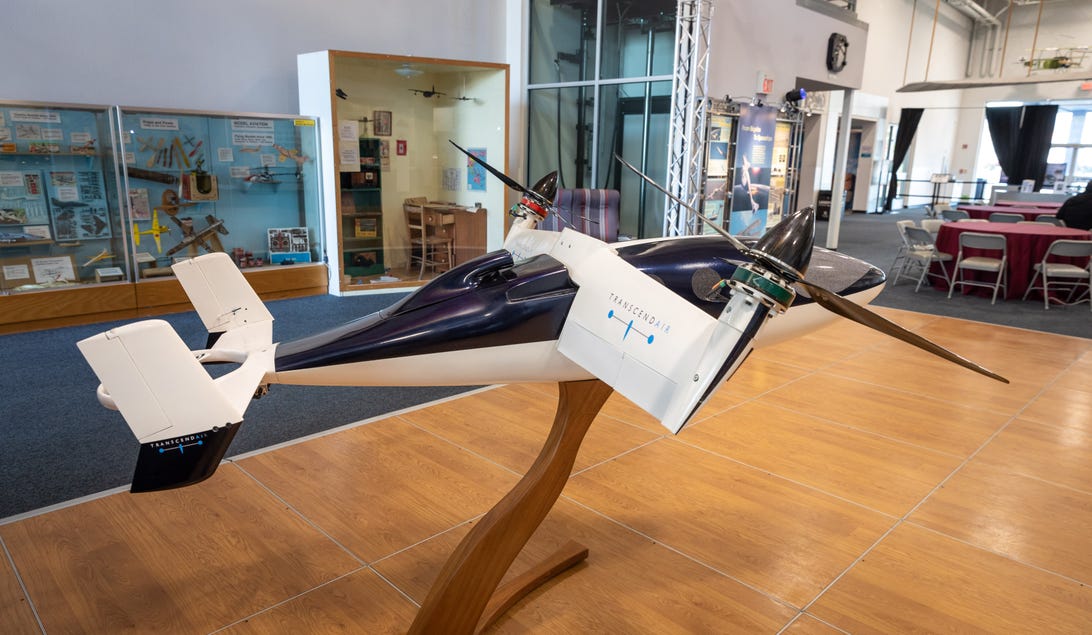
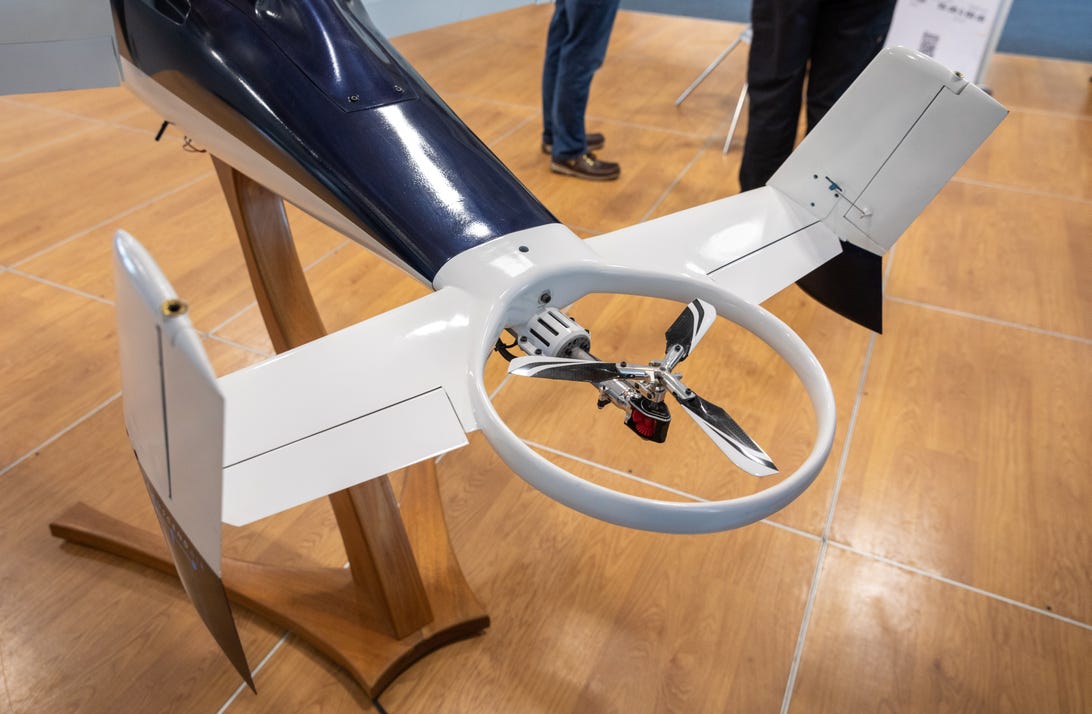
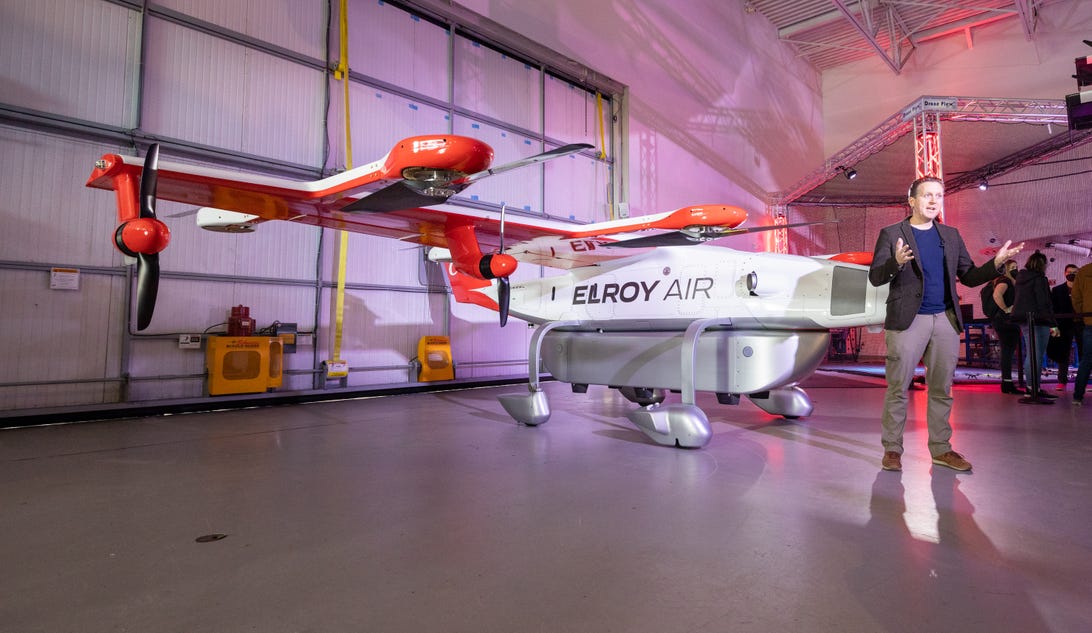
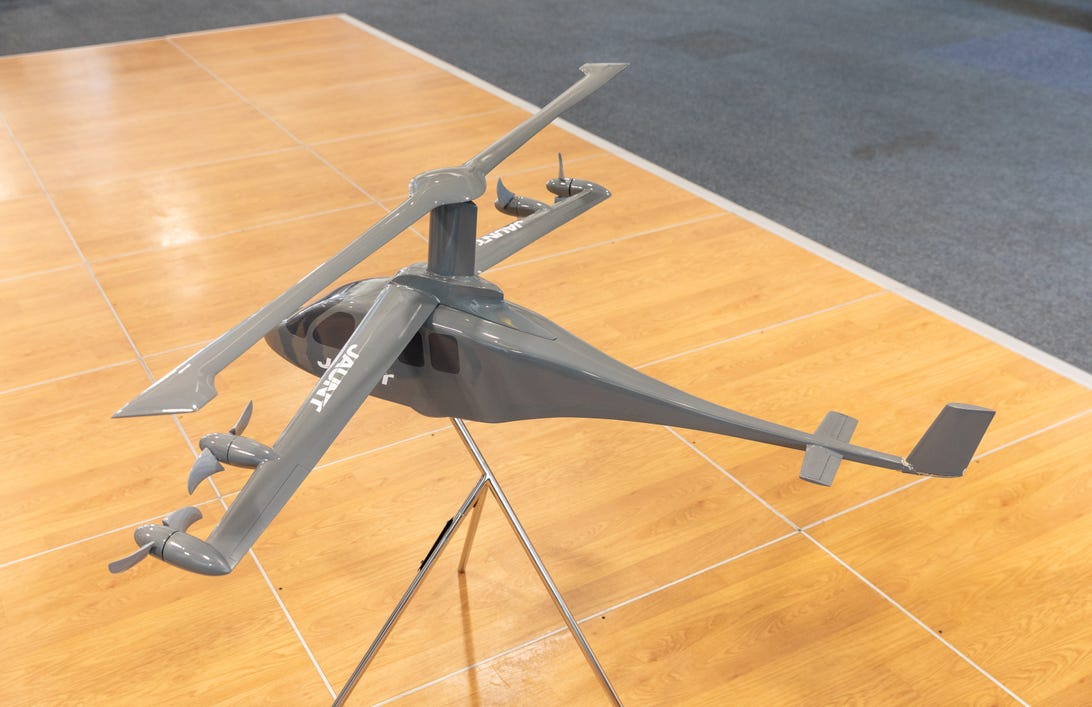
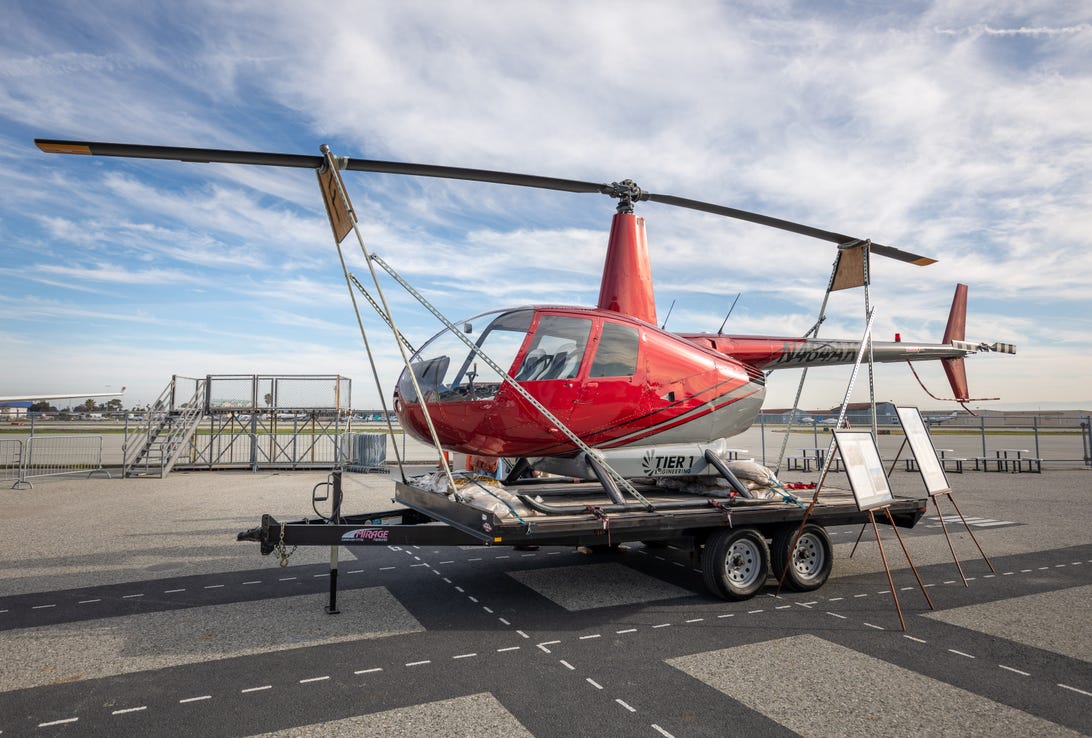
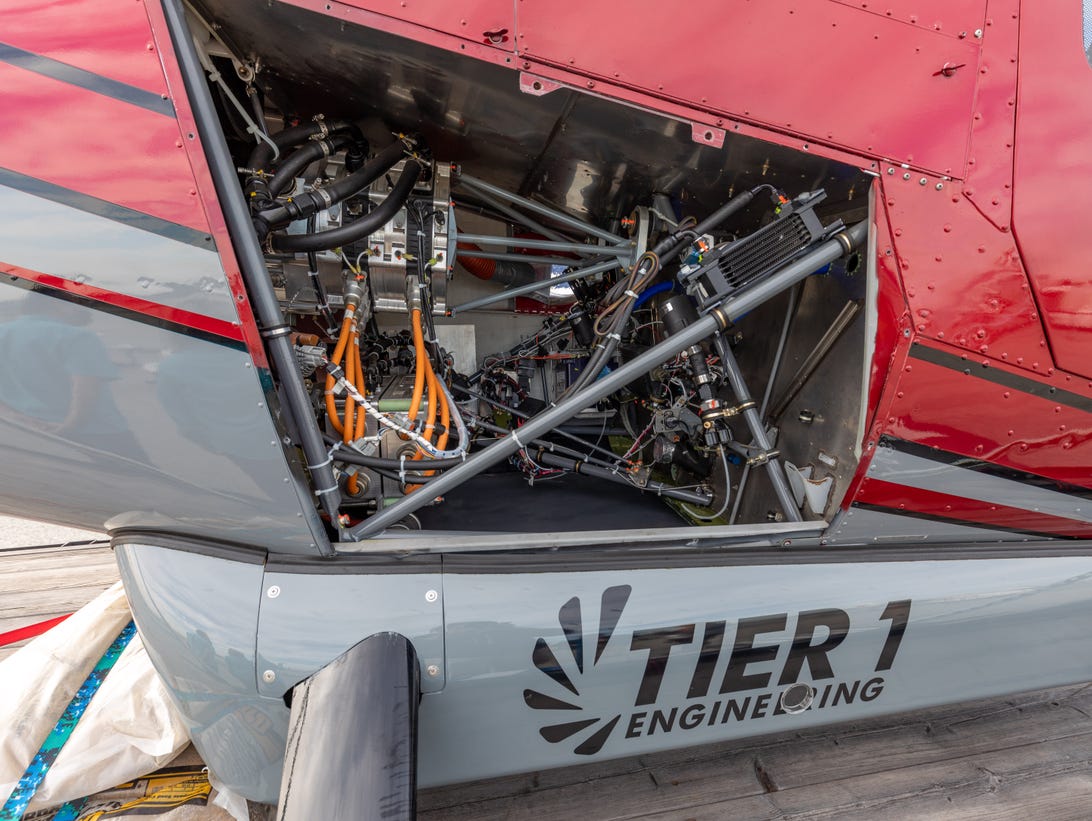
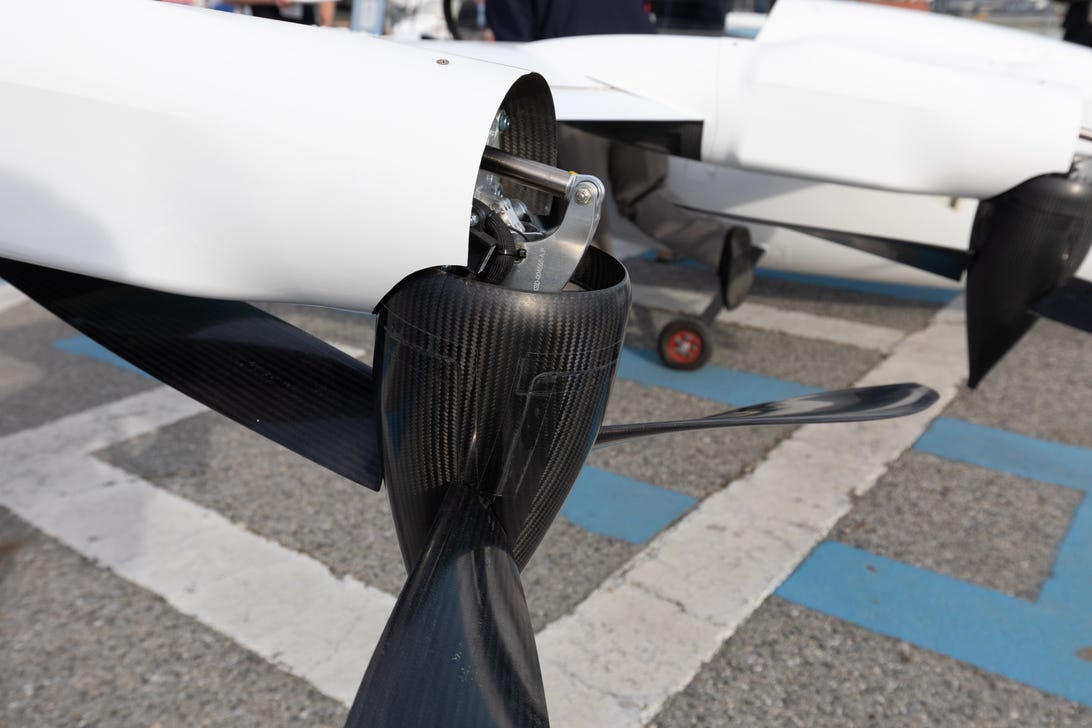
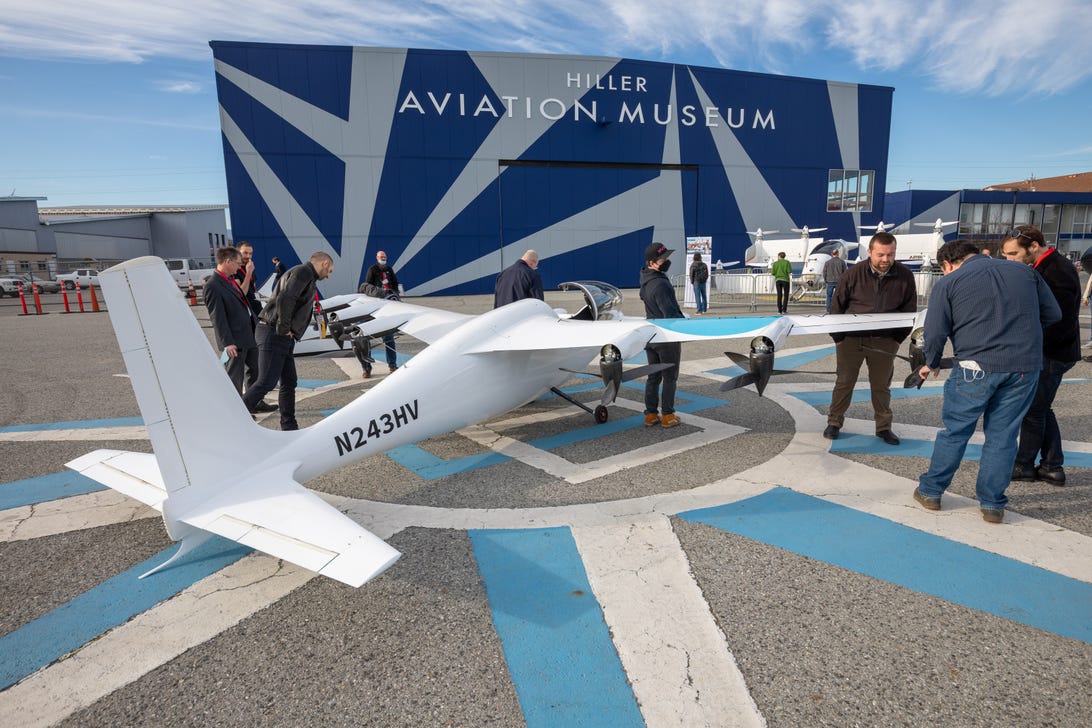
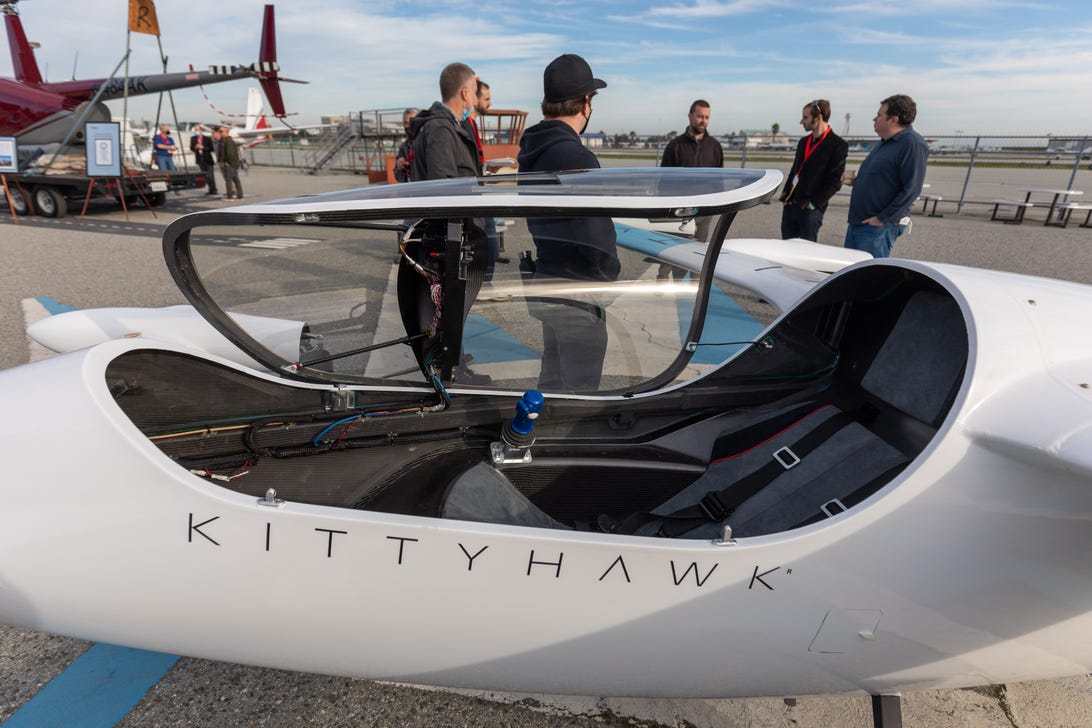
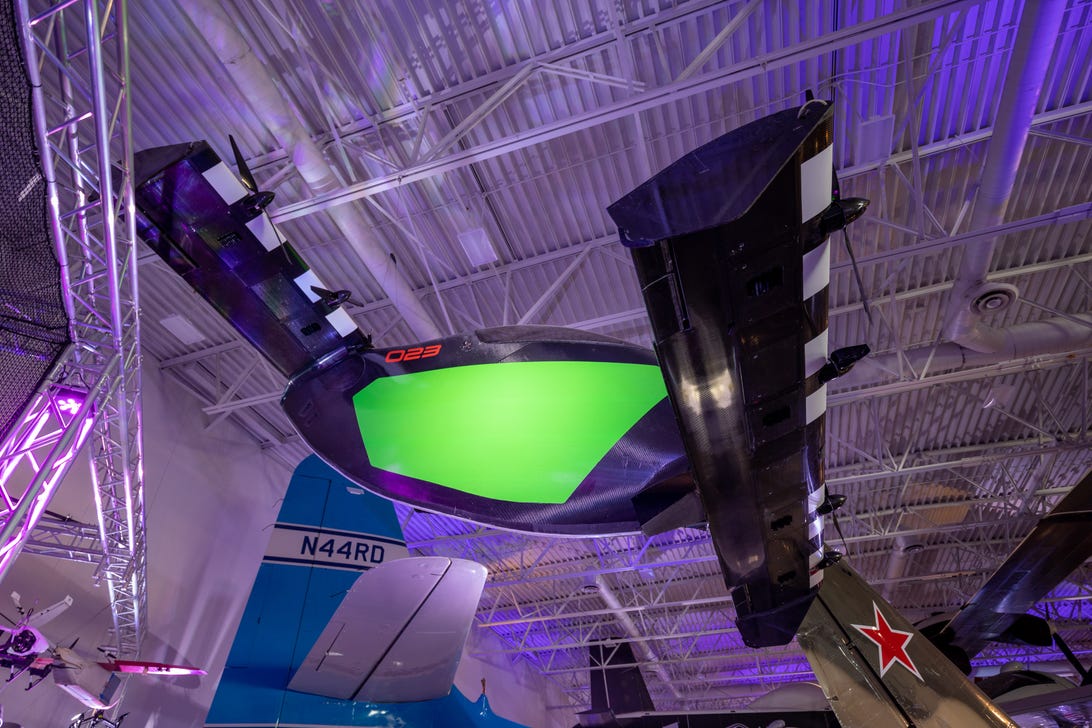
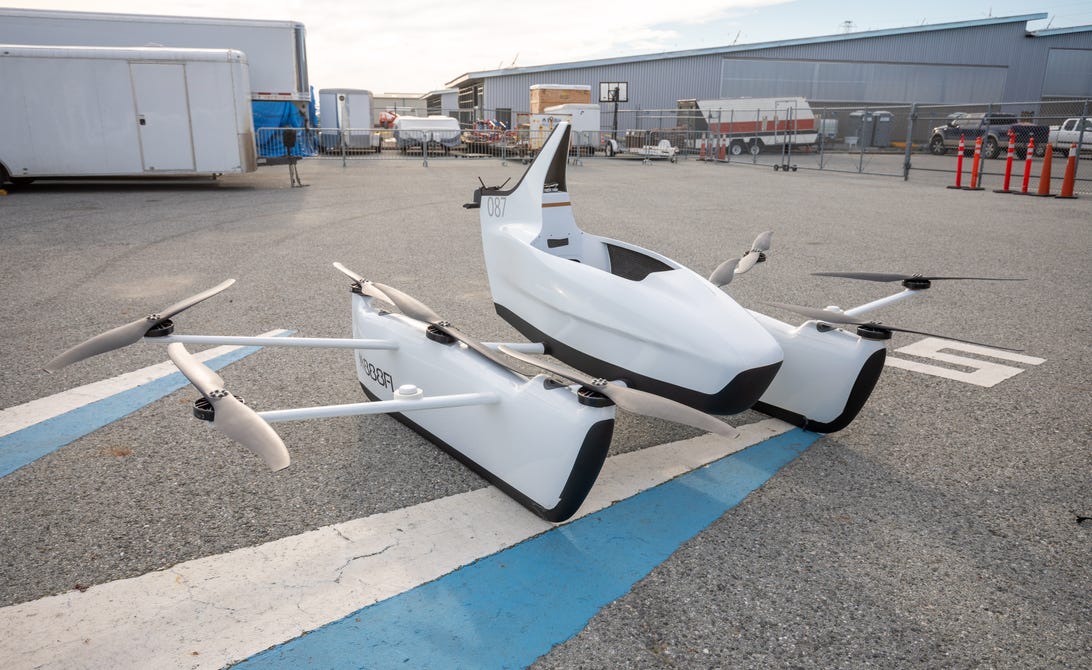
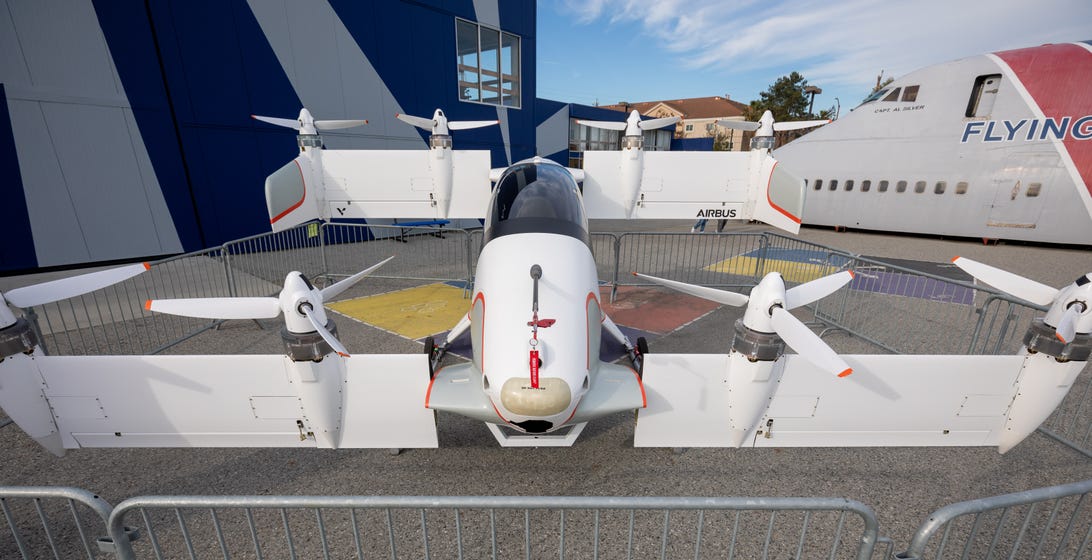
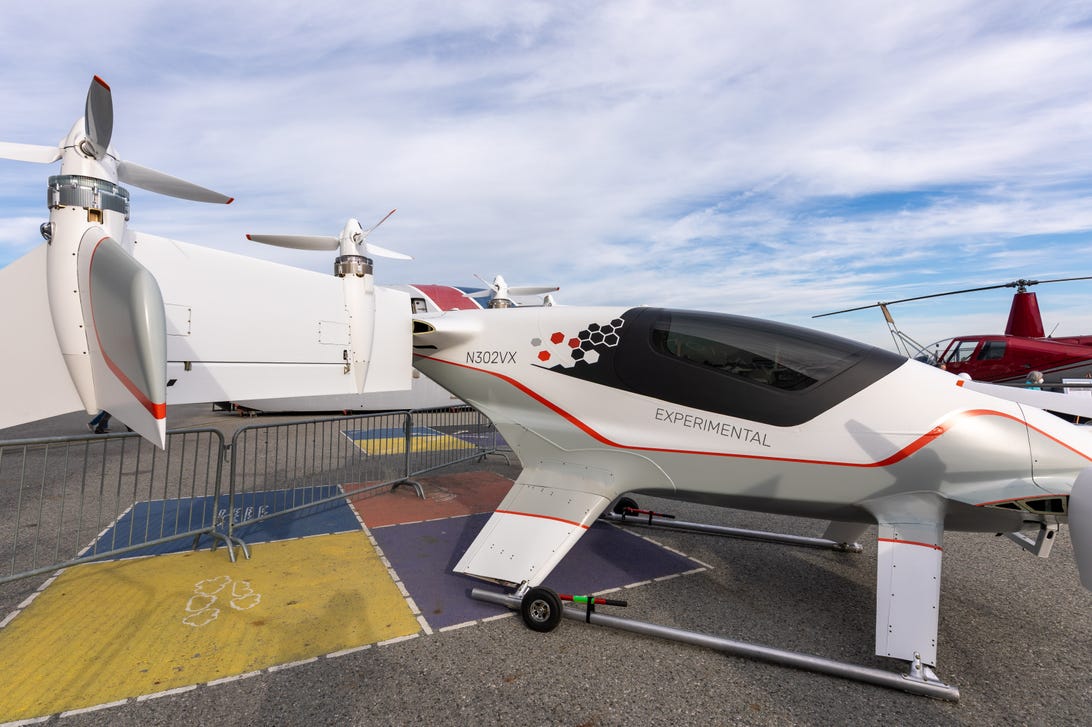


























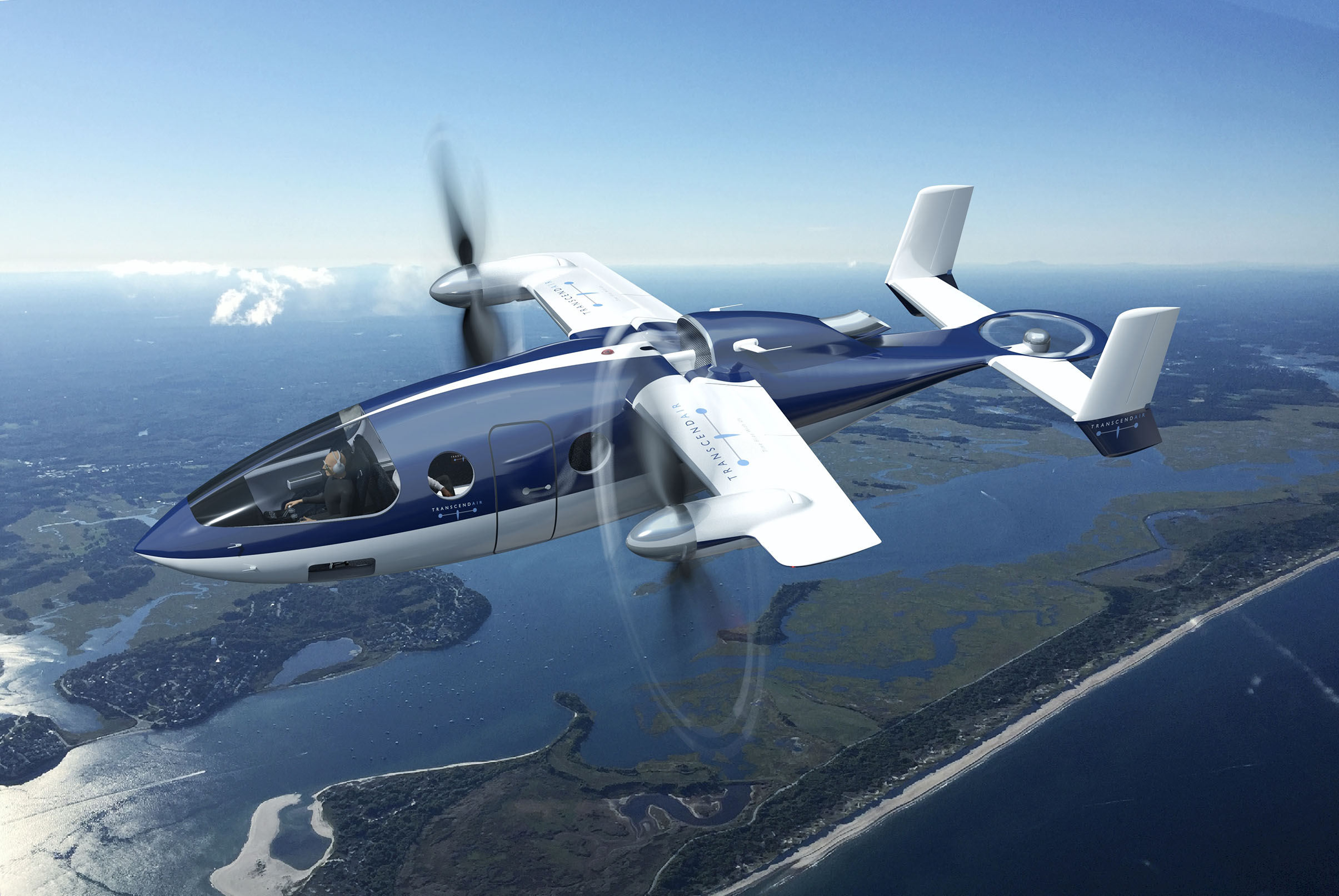












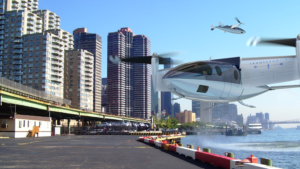







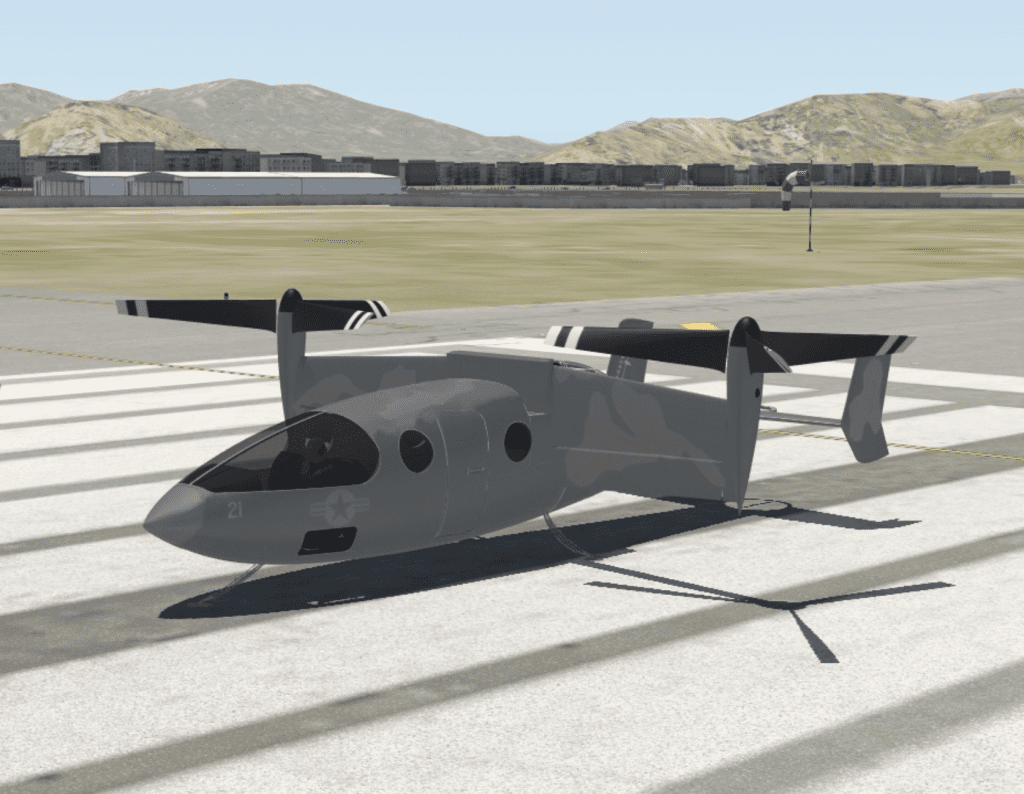






































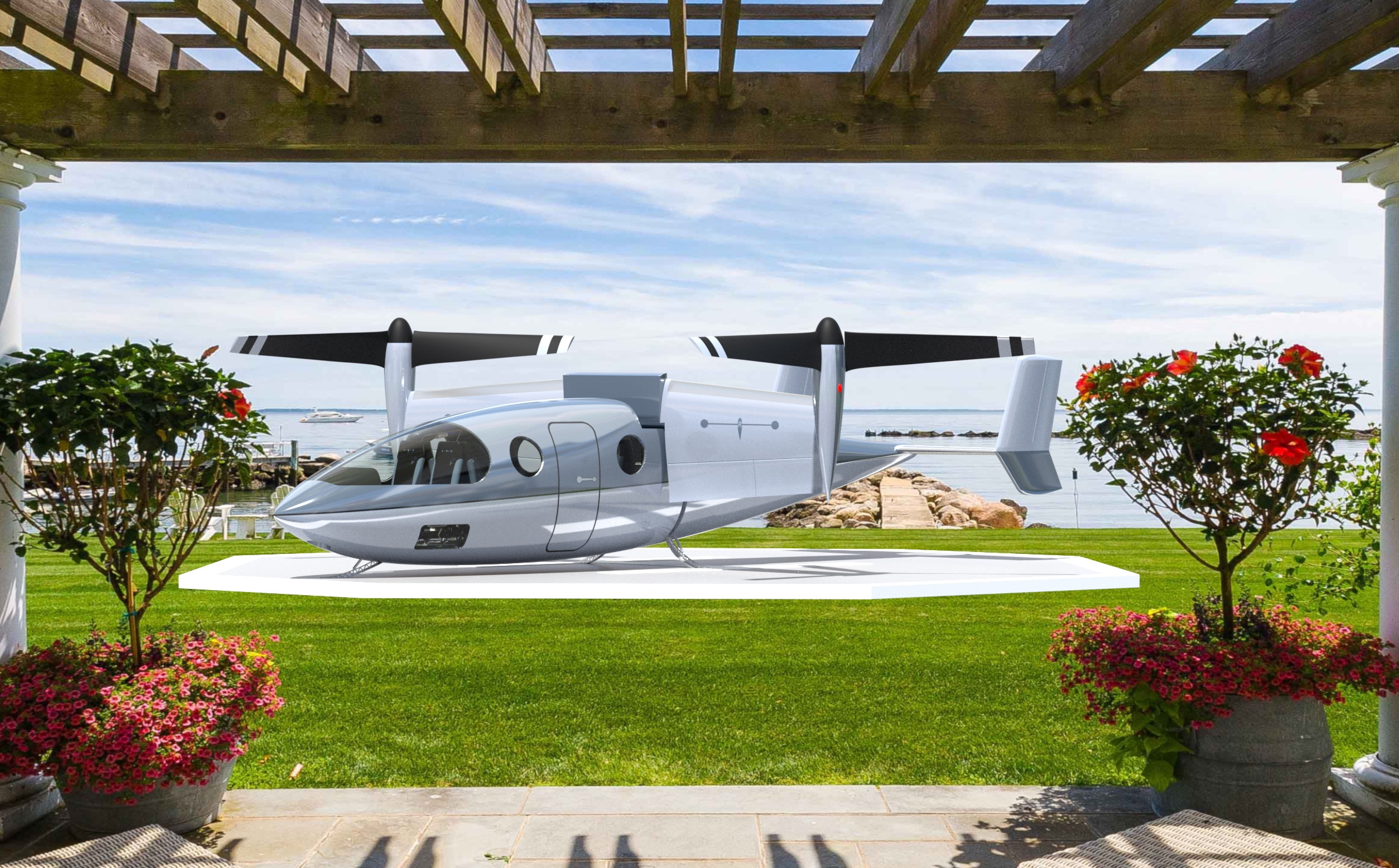 Vy 400R on backyard landing pad (Transcend Air)
Vy 400R on backyard landing pad (Transcend Air)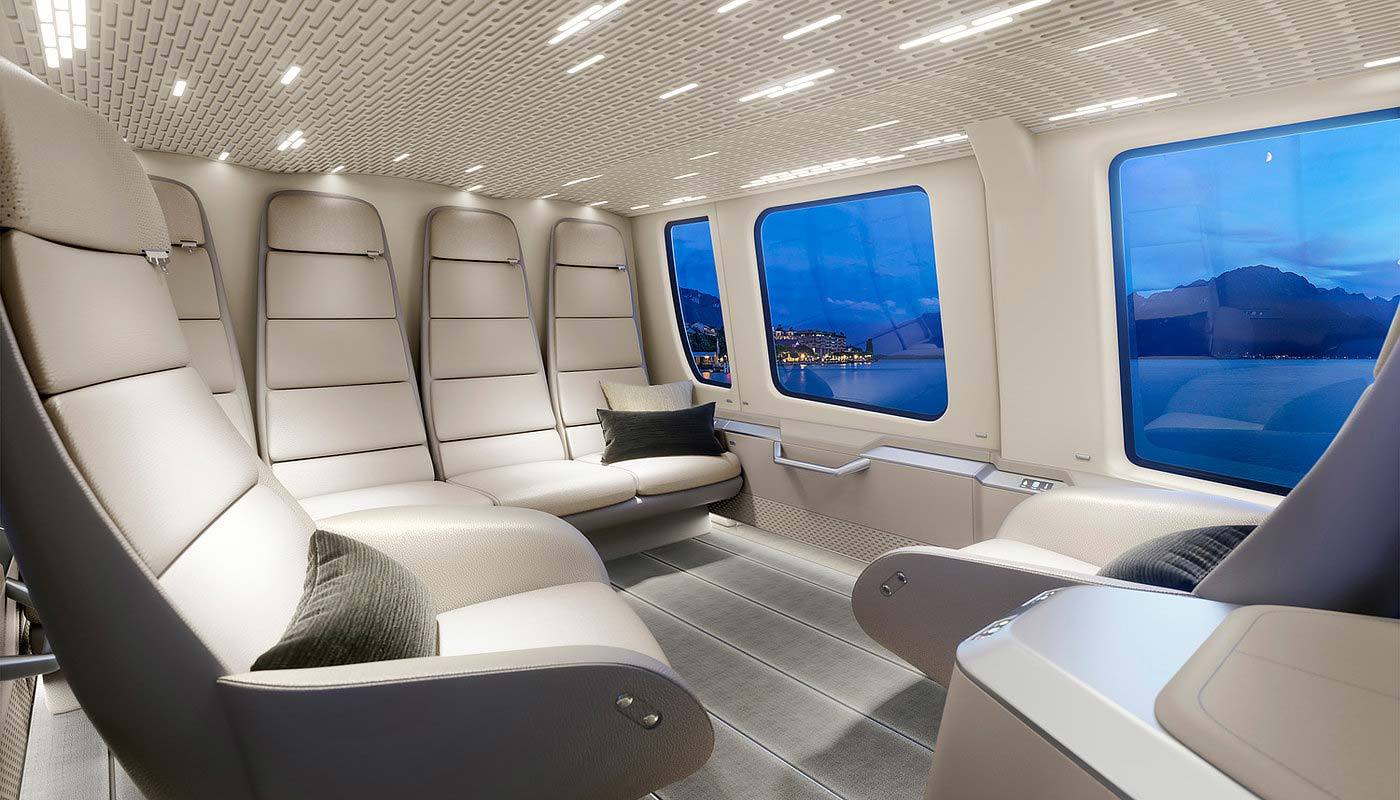






![[VIDEO] Wisconsin entrepreneur hopes to upend airline industry with Transcend Air](https://cdn.docpromote.com/media/3/press/wdjt-58-opener.png)

















![[VIDEO] Air taxis? Boston company working to make unique air travel a reality](https://cdn.docpromote.com/media/3/press/peter-evan-white-interview.jpg)














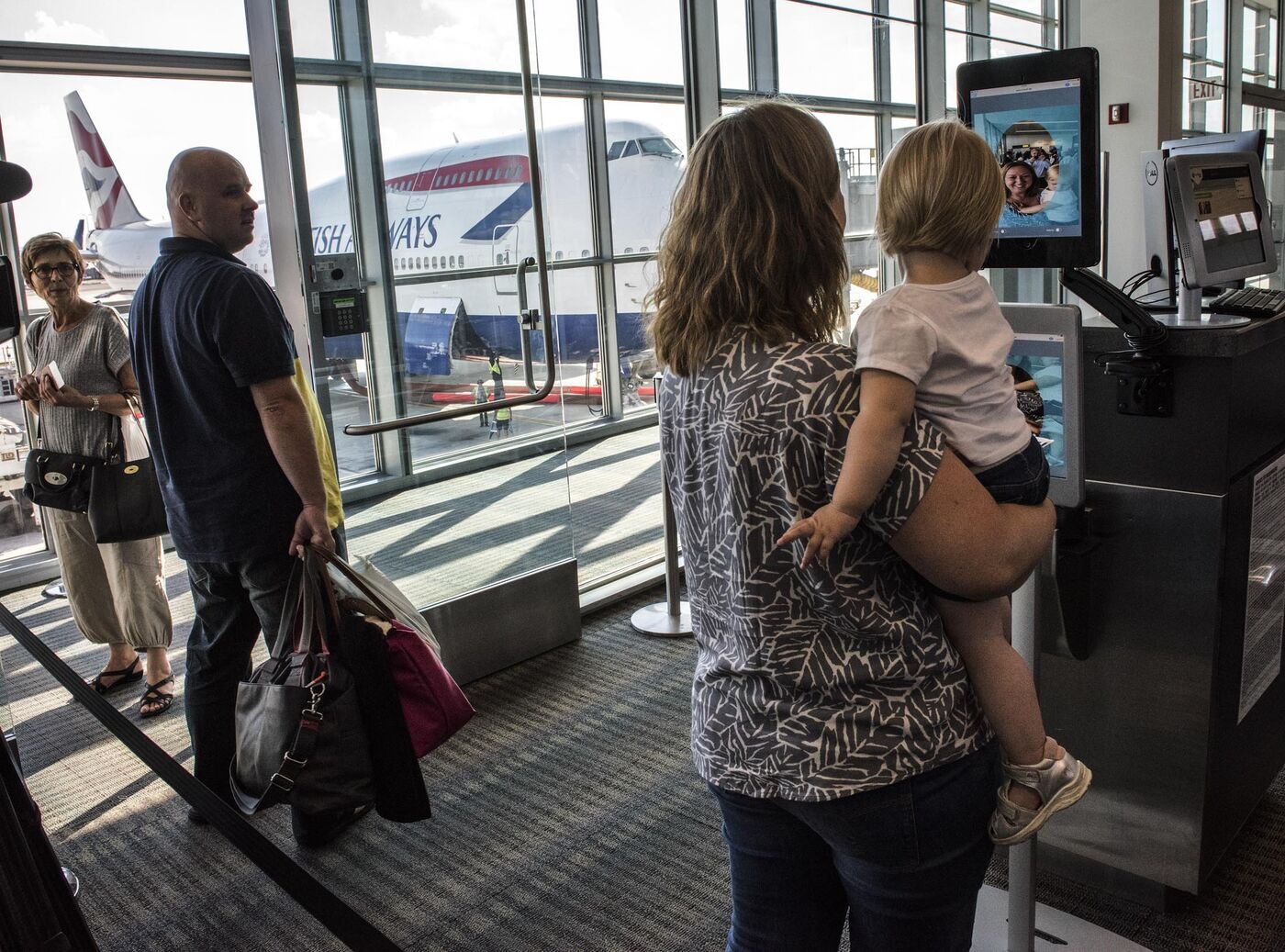


![[VIDEO] How Transcend Air hopes to shape the future of commuting](https://cdn.docpromote.com/media/3/press/today-show-20190116.png)


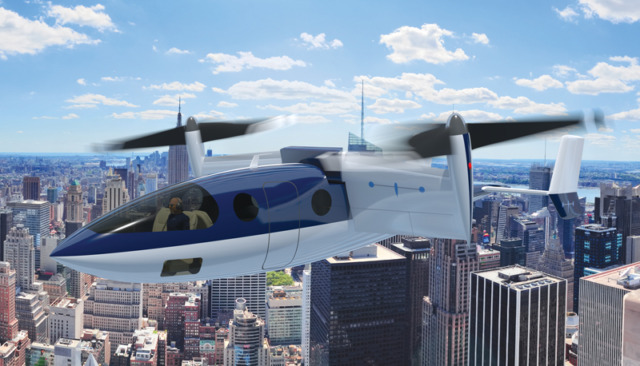































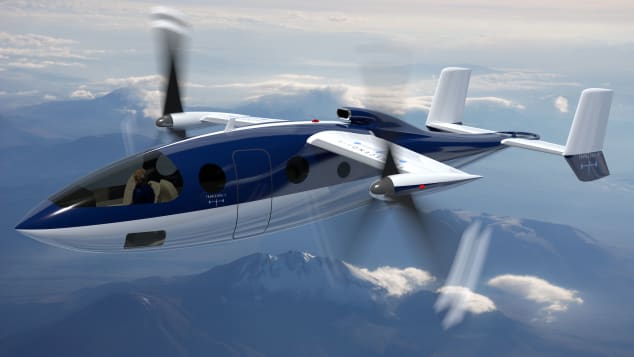
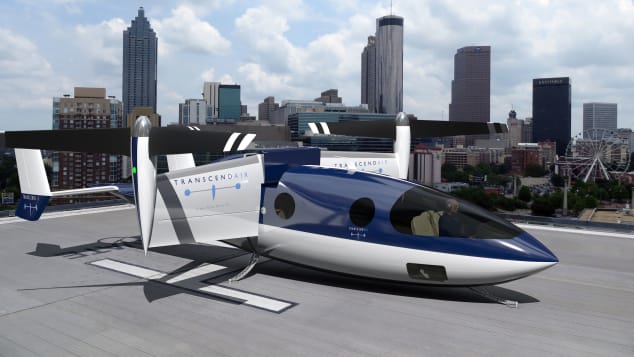
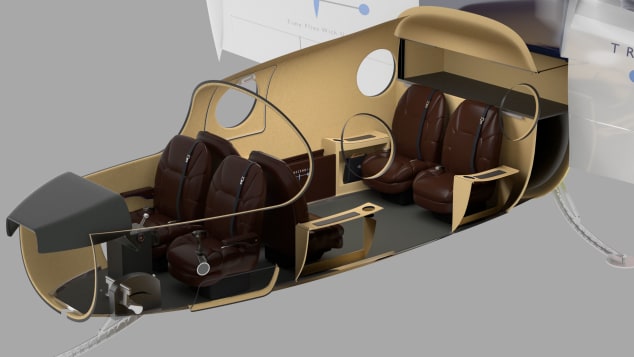










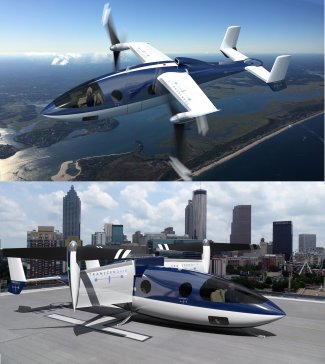


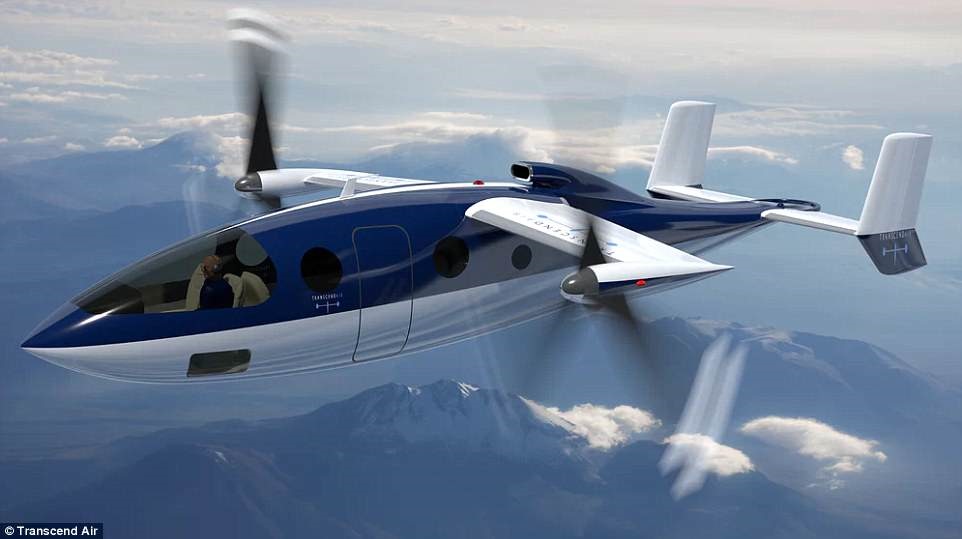


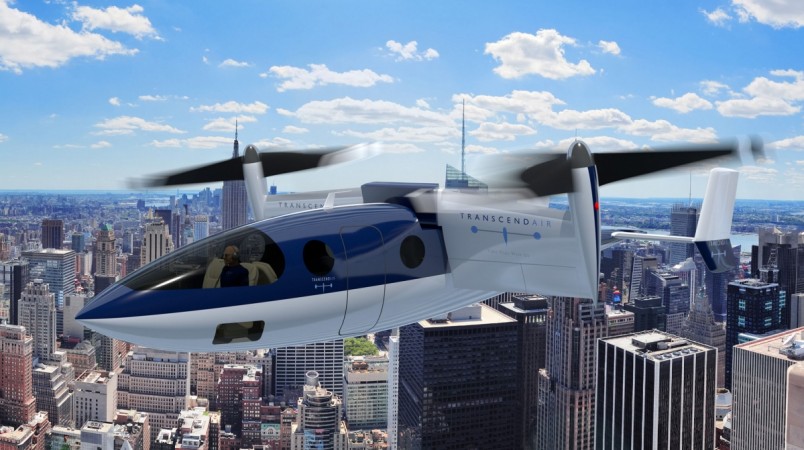

 Podniebna taksówka typu VTOL od Transcend Air. Fot. Transcend Air Corporation.
Podniebna taksówka typu VTOL od Transcend Air. Fot. Transcend Air Corporation. Podniebna taksówka typu VTOL od Transcend Air. Fot. Transcend Air Corporation.
Podniebna taksówka typu VTOL od Transcend Air. Fot. Transcend Air Corporation. Transcend Air Vy 400 City View " data-medium-file="https://i0.wp.com/evtol.news/wp-content/uploads/2018/06/AicraftCityView.jpg?fit=300%2C168" data-large-file="https://i0.wp.com/evtol.news/wp-content/uploads/2018/06/AicraftCityView.jpg?fit=750%2C419" />
Transcend Air Vy 400 City View " data-medium-file="https://i0.wp.com/evtol.news/wp-content/uploads/2018/06/AicraftCityView.jpg?fit=300%2C168" data-large-file="https://i0.wp.com/evtol.news/wp-content/uploads/2018/06/AicraftCityView.jpg?fit=750%2C419" />
 Transcend Vy 400 Simulation " data-medium-file="https://i0.wp.com/evtol.news/wp-content/uploads/2018/06/overwater.jpg?fit=300%2C168" data-large-file="https://i0.wp.com/evtol.news/wp-content/uploads/2018/06/overwater.jpg?fit=750%2C419" />
Transcend Vy 400 Simulation " data-medium-file="https://i0.wp.com/evtol.news/wp-content/uploads/2018/06/overwater.jpg?fit=300%2C168" data-large-file="https://i0.wp.com/evtol.news/wp-content/uploads/2018/06/overwater.jpg?fit=750%2C419" /> Transcend Vy400 Landed " data-medium-file="https://i0.wp.com/evtol.news/wp-content/uploads/2018/06/landed.jpg?fit=300%2C169" data-large-file="https://i0.wp.com/evtol.news/wp-content/uploads/2018/06/landed.jpg?fit=750%2C422" />
Transcend Vy400 Landed " data-medium-file="https://i0.wp.com/evtol.news/wp-content/uploads/2018/06/landed.jpg?fit=300%2C169" data-large-file="https://i0.wp.com/evtol.news/wp-content/uploads/2018/06/landed.jpg?fit=750%2C422" /> Transcend Vy 400 Prototype 11 " data-medium-file="https://i0.wp.com/evtol.news/wp-content/uploads/2018/06/proto-11.jpg?fit=300%2C143" data-large-file="https://i0.wp.com/evtol.news/wp-content/uploads/2018/06/proto-11.jpg?fit=750%2C357" />
Transcend Vy 400 Prototype 11 " data-medium-file="https://i0.wp.com/evtol.news/wp-content/uploads/2018/06/proto-11.jpg?fit=300%2C143" data-large-file="https://i0.wp.com/evtol.news/wp-content/uploads/2018/06/proto-11.jpg?fit=750%2C357" />










